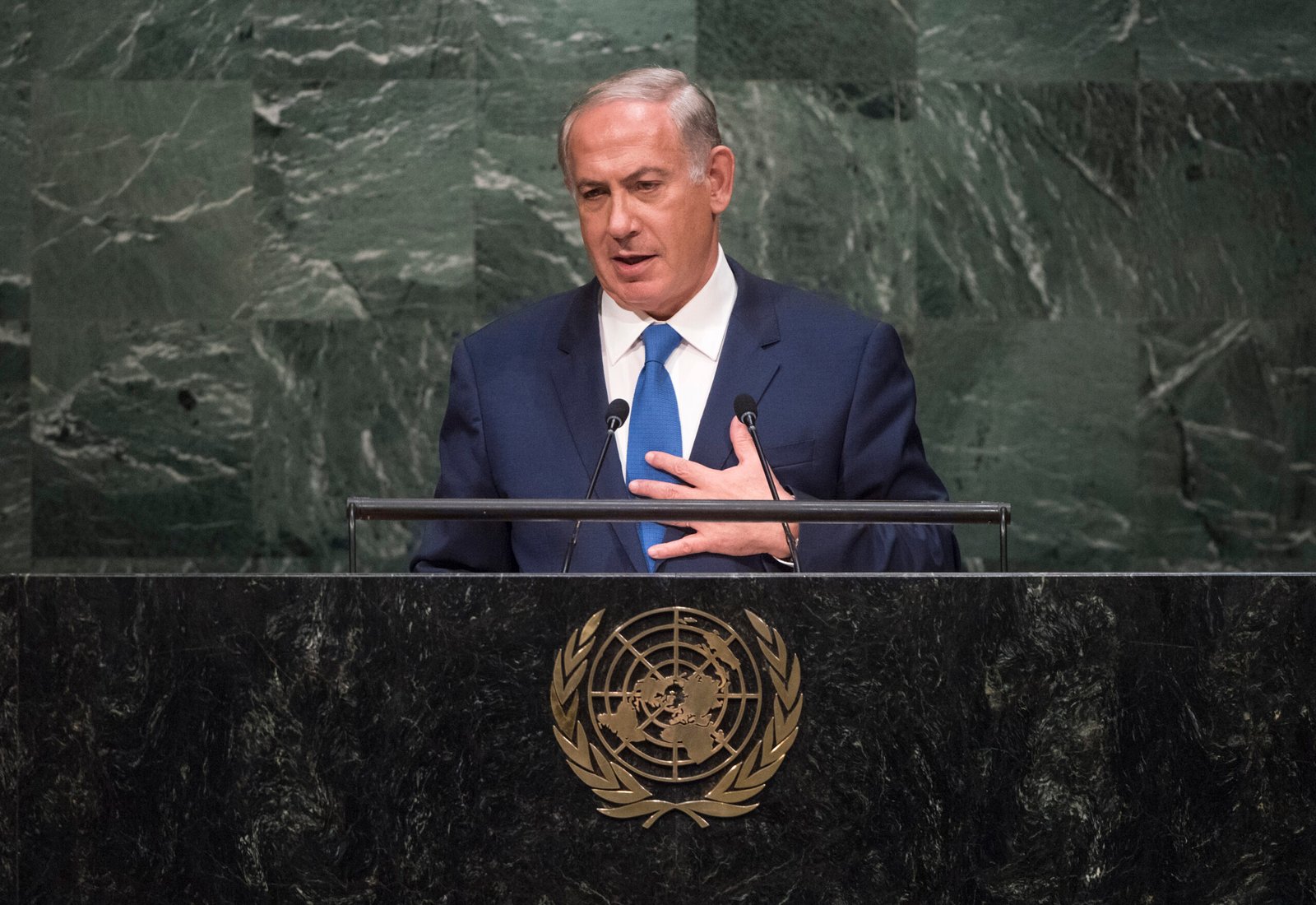World News
US walks tightrope as hostage deal nears, Israel eyes southern Gaza on November 19, 2023 at 9:00 pm

U.S. officials are walking a delicate yet contorted tightrope when it comes to addressing Israel’s offensive in Gaza as it stares down a potential deal to release dozens of hostages from Hamas’s grip, while emphasizing “real concern” for an Israeli operation eyed in the coastal enclave’s southern tip.
Deputy national security adviser Jonathan Finer was tasked Sunday with tackling the aftermath of a report that broke late Saturday indicating that a deal was close to being reached for a five-day pause in fighting in exchange for the release of some of the 239 hostages in Gaza who were captured on Oct. 7.
Reporting by The Washington Post indicated that a U.S.-brokered deal as a result of talks in Doha that involved Israel and Hamas via Qatari mediators would free dozens of women and children as well as allow an increase in much-needed humanitarian assistance for civilians, including fuel.
Finer, as well as U.S. Ambassador to Israel Michael Herzog, expressed hope a hostage agreement could be reached in the coming days, but they were careful to remain cautious that the deal is not yet done.
“[W]e are closer than we have been to reaching a final agreement, but that on an issue as sensitive as this and as challenging is this, the mantra that nothing is agreed until everything is agreed really does apply. And we do not yet have an agreement in place,” Finer told CBS’s Margaret Brennan on “Face the Nation.”
On ABC’s “This Week” with Martha Raddatz, Finer responded to a notion expressed by Qatar’s prime minister that mostly “very minor” logistical and practical issues remain before the hostages could be released.
“[S]ome of the gaps have now narrowed. Some of the issues that were at odds have now been closed out. But we are not finished — there is not yet a deal in place. And I think it would be premature to conclude that this is inevitable given how close we have come in the past,” Finer said, adding that he would not detail negotiations in public.
“They’re making some progress, and we hope that that will be concluded soon so that these people can finally come home,” he added.
Herzog also on ABC’s “This Week” described the status of the negotiations as “hopeful,” and he said he hoped that they could soon come to fruition.
“We are hopeful that we can get a significant number of hostages freed in the coming days. I don’t want to go into the details of these talks. They are obviously very sensitive. The less we’re going to the details, the better the chances of such a deal. But they are very serious efforts, and I’m hopeful that we can have the deal in the coming days,” he said.
Herzog was also cautious, however, to emphasize that a brief pause did not indicate support for a cease-fire, which U.S. and Israeli officials firmly maintain would only help Hamas regroup.
“We’re talking about a pause in the fighting for a few days, so we can get the hostages out,” Herzog said. “It’s not — it’s not a cease-fire because we will continue to push against Hamas to dismantle their military infrastructure and their terror infrastructure. We are not going to stop that, but we are willing to go for a pause, for a significant number of hostages, if we have [a] deal.”
Simultaneously, Israel has been eyeing an offensive in Gaza’s south, where thousands of civilians have fled in recent weeks after heeding evacuation orders by Israel to do so.
Finer on CBS was asked how much the U.S. would apply any legal restrictions to military equipment it sends Israel on a “human rights basis” after Israeli Prime Minister Benjamin Netanyahu told the network last week that Israel was “not successful” in minimizing civilian casualties.
The national security adviser responded with a sustained notion by the Biden administration that Israel had the right to defend itself, but he added there were concerns about where they would target next.
“In the event that we believe that Israel is likely to to embark on combat operations, including in the south, we believe both that they have the right to do that, but that there is a real concern, because hundreds of thousands of residents of Gaza have fled now from the north to the south at Israel’s request,” Finer said. “And we think that their operations should not go forward until those people — those additional civilians have been accounted for in their military planning.
Thomas White, the director of the U.N. Relief and Works Agency for Palestinian Refugees, told ABC that the situation in Gaza remained “very desperate,” describing a recent report that one of its schools were hit as “horrific.”
“This is the reality of this conflict, is that people in Gaza have got nowhere to go. It’s unlike other conflicts where, you know, there’s fighting in one city and you move to another city,” White said. “You know, the reality is, the Gazans have got nowhere to go for safety. And they are all exposed to the threat of fighting, and particularly airstrikes.”
The Biden administration has come under increased pressure over the last month as the Palestinian death toll climbs to the tens of thousands, according to the Gaza Health Ministry.
It has shifted its tone on the war since its start, at first offering unequivocal support to Israel before it began lacing its messaging with warnings to its strongest Middle East ally that it must abide by international law and do what it can to limit civilian casualties while allowing for humanitarian aid to enter.
But that shift hasn’t resonated with Democrats, whose support of Biden on the matter of foreign policy continues to erode, as evidenced by an NBC poll released Sunday.
That survey found just 34 percent of voters approve of how Biden is handling the Israel-Hamas war, with 51 percent of Democrats approving of Biden’s handling of the conflict.
A growing contingent of Democratic lawmakers are also increasing calls for a cease-fire, a move that neither the administration nor Israel support. Meanwhile, demonstrations by protestors who support a cease-fire have turned violent at the doorstep of Democratic Party headquarters both in Washington and California in recent days.
For his part, Biden made his most recent case on the matter in an op-ed published by The Washington Post in which he acknowledged brutal attacks by Hamas on Israelis and the deaths of thousands of civilians in Gaza while offering again the only foreign policy solution he sees fit in the region.
“A two-state solution — two peoples living side by side with equal measures of freedom, opportunity and dignity — is where the road to peace must lead. Reaching it will take commitments from Israelis and Palestinians, as well as from the United States and our allies and partners. That work must start now,” Biden wrote.
When asked about House and Senate Democrats who are increasingly pushing for conditions on aid in relation to what some call indiscriminate bombing, Finer said no U.S. assistance to another country was unconditional but that the situation at hand came with its own set of unique complications.
“All of the requirements associated with international humanitarian law are applicable here. The last thing I will say on this, though, and it’s important to bear in mind, is that Israel is fighting an adversary that not only does not hold itself to these same standards, it openly boasts about flouting them and about its violations, flagrant violations of international law,” Finer told CNN’s Jake Tapper on “State of the Union.”
“That does not diminish Israel’s obligations, but it is a facet of this conflict that makes the challenge extremely daunting.”
U.S. officials are walking a delicate yet contorted tightrope when it comes to addressing Israel’s offensive in Gaza as it stares down a potential deal to release dozens of hostages from Hamas’s grip, while emphasizing “real concern” for an Israeli operation eyed in the coastal enclave’s southern tip. Deputy national security adviser Jonathan Finer was…
Politics
Netanyahu’s UN Speech Triggers Diplomatic Walkouts and Mass Protests

What Happened at the United Nations
On Friday, Israeli Prime Minister Benjamin Netanyahu addressed the United Nations General Assembly in New York City, defending Israel’s ongoing military operations in Gaza. As he spoke, more than 100 delegates from over 50 countries stood up and left the chamber—a rare and significant diplomatic walkout. Outside the UN, thousands of protesters gathered to voice opposition to Netanyahu’s policies and call for accountability, including some who labeled him a war criminal. The protest included activists from Palestinian and Jewish groups, along with international allies.

Why Did Delegates and Protesters Walk Out?
The walkouts and protests were a response to Israel’s continued offensive in Gaza, which has resulted in widespread destruction and a significant humanitarian crisis. Many countries and individuals have accused Israel of excessive use of force, and some international prosecutors have suggested Netanyahu should face investigation by the International Criminal Court for war crimes, including claims that starvation was used as a weapon against civilians. At the same time, a record number of nations—over 150—recently recognized the State of Palestine, leaving the United States as the only permanent UN Security Council member not to join them.
International Reaction and Significance
The diplomatic walkouts and street protests demonstrate increasing global concern over the situation in Gaza and growing support for Palestinian statehood. Several world leaders, including Colombia’s President Gustavo Petro, showed visible solidarity with protesters. Petro called for international intervention and, controversially, for US troops not to follow orders he viewed as supporting ongoing conflict. The US later revoked Petro’s visa over his role in the protests, which he argued was evidence of a declining respect for international law.

Why Is This News Important?
The Gaza conflict is one of the world’s most contentious and closely-watched issues. It has drawn strong feelings and differing opinions from governments, activists, and ordinary people worldwide. The United Nations, as an international organization focused on peace and human rights, is a key arena for these debates. The events surrounding Netanyahu’s speech show that many nations and voices are urging new action—from recognition of Palestinian rights to calls for sanctions against Israel—while discussion and disagreement over the best path forward continue.
This episode at the UN highlights how international diplomacy, public protests, and official policy are all intersecting in real time as the search for solutions to the Israeli-Palestinian conflict remains urgent and unresolved.
News
Is a Nuclear-Powered Alien Spacecraft Flying Toward Earth?

A mysterious interstellar object speeding through our solar system has reignited debates about extraterrestrial technology — and whether Earth might currently be under quiet observation.
The object, known as 3I/ATLAS, is only the third confirmed interstellar visitor ever detected. Unlike ordinary comets, however, this cosmic traveler has baffled astronomers with its unusual brightness, strange trajectory, and lack of a visible cometary tail. While most scientists cautiously describe it as a natural body, one leading astrophysicist believes something much stranger is at play.

Harvard Scientist’s Bold Claim
Professor Avi Loeb of Harvard University, head of the Galileo Project, has suggested that 3I/ATLAS may in fact be a nuclear-powered alien spacecraft designed to test how humanity would respond to an interstellar visitor. He argues that its flight path is improbably precise, bringing it close to Mars, Venus, and Earth — a pattern highly unlikely to occur by chance.
Loeb also points out that telescope images show a glow inconsistent with ordinary dust behavior. Instead of trailing behind like a comet, the halo-like light appears to extend in unusual ways, sparking debate about whether the object could be emitting energy of its own.
Headed Toward Earth’s Neighborhood
3I/ATLAS is expected to make its closest approach in late 2025, passing near Mars before swinging by the inner solar system. Although Earth itself will be on the opposite side of the Sun when it comes closest, the alignment will still enable space-based observatories to capture sharper data.

Loeb has called on NASA and other agencies to use spacecraft already stationed near Mars or Jupiter — including the Juno mission — to take high-resolution photographs. He believes such efforts could reveal whether the interstellar object is truly natural, or the first technological probe humanity has ever encountered.
Should We Be Worried?
While most astronomers argue caution before jumping to alien conclusions, Loeb insists that scientific openness is key. “If it’s just a comet, we learn something new,” he said. “But if it’s a spacecraft, it would be the most important discovery in human history.”
For now, 3I/ATLAS remains a mysterious speck on astronomers’ charts, drifting closer with each passing day. Whether it proves to be a frozen remnant of another star system or something far more advanced, the interstellar visitor has already succeeded in one mission: reminding us how vast and unpredictable the universe really is.
News
AI Automation Could Cause Up to 20% Unemployment—A Workforce on the Brink

Stark Warning from Anthropic CEO Highlights Rapid Job Displacement Risk
The looming threat of widespread unemployment due to AI automation has sparked intense debate among experts, business leaders, and policymakers. Dario Amodei, CEO of Anthropic—the company behind the influential AI language model Claude—issued a stark warning that has sent shockwaves through corporate America:

“Up to half of all entry-level white collar jobs could disappear within the next one to five years, potentially pushing unemployment rates as high as 20% during this period.”
This dramatic forecast paints a picture of a rapid and unsettling transformation in the workforce, driven by AI technologies that can perform complex cognitive tasks.
Balancing Predictions: Worst-Case Scenarios vs. Moderate Impact
However, this forecast represents one end of a spectrum of expert predictions. While Amodei’s warning highlights the worst-case scenario driven by the swift adoption of AI agents capable of coding, analyzing data, drafting legal documents, and managing workflows around the clock, other analyses suggest a more moderate impact. For example, Goldman Sachs estimates that AI could temporarily displace about 6-7% of U.S. jobs, with unemployment rising by approximately half a percentage point during the adjustment period. Their research anticipates a more gradual transition with a mixture of job disruption and creation.

The Unprecedented Speed and Scope of AI-Driven Job Disruption
The truth likely lies somewhere in between. AI is advancing at unprecedented speed, and the scope of jobs affected spans far beyond blue-collar roles to white-collar positions that required college degrees and years of training. Entry-level roles such as customer service representatives, data entry clerks, junior analysts, and administrative assistants face the greatest near-term risk. Mid-level roles in accounting, marketing, law, and engineering could soon follow, with companies already laying off workers citing AI-driven efficiencies.
Preparing for an AI-Transformed Workforce: Adaptation Is Essential
Ultimately, the AI-driven job transformation is no longer a distant prospect but unfolding now. Whether unemployment spikes to 20% or stabilizes at lower levels depends on many factors, including business adoption rates, government policies, and the ability of workers to reskill. What is certain is that the workforce of tomorrow will look very different from today—and the time to prepare is right now.

 Business4 weeks ago
Business4 weeks agoDisney Loses $3.87 Billion as Subscription Cancellations Surge After Kimmel Suspension

 Entertainment4 weeks ago
Entertainment4 weeks agoWhat the Deletion Frenzy Reveals in the David and Celeste Tragedy

 Entertainment4 weeks ago
Entertainment4 weeks agoExecutive Producer Debut: How Celia Carver Created Festival Hit ‘Afterparty’

 Health4 weeks ago
Health4 weeks agoRussia Claims 100% Success With New mRNA Cancer Vaccine

 Business3 weeks ago
Business3 weeks agoWhy Are Influencers Getting $7K to Post About Israel?

 Health4 weeks ago
Health4 weeks agoWhy Did Gen Z QUIT Drinking Alcohol?

 Advice4 weeks ago
Advice4 weeks agoHow AI Is Forcing Everyone Into the Entrepreneur Game

 Entertainment3 weeks ago
Entertainment3 weeks agoKeith Urban and Nicole Kidman Split After 20 Years as Actress Files for Divorce






























